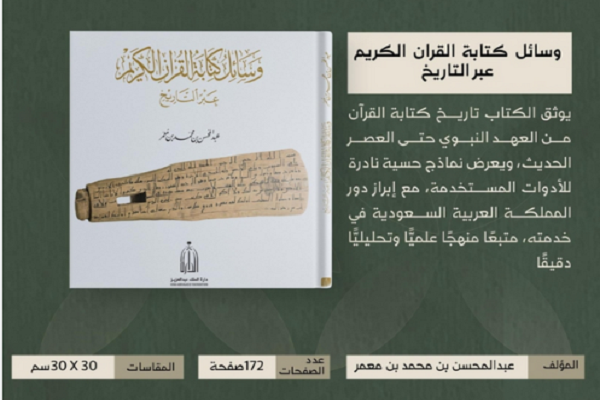New Book Explains Evolution of Quranic Writing Tools

The King Abdulaziz Foundation in Saudi Arabia has released a new academic work titled “Tools of Quranic Writing Throughout History” by Abdulmohsen bin Mohammed bin Muammar. The 172-page book, published in Arabic, explores the evolution of instruments used for writing the Quran from the time of its revelation to the advent of modern digital printing.
According to elmstba.net, the book provides a comprehensive historical overview of how Muslims have preserved and transcribed the Quran over more than fourteen centuries.
It begins with early methods of documentation during the Prophet Muhammad’s (PBUH) era, such as the use of leather, wooden tablets, and stone slabs.
The author examines key milestones, including the compilation of the Quran during the caliphate of Abu Bakr and the standardization of its text under Caliph Uthman ibn Affan. Later developments, such as the introduction of diacritical marks, decorative elements, and the use of paper, audio recording, and digital print technologies, are also covered.
Read More:
One of the distinctive features of the book is its inclusion of rare photographs. These images showcase tangible models of historical writing tools and surfaces — from pens and inks to parchment, wood, and leather — offering readers what the author describes as a “unique, scientifically documented visual experience.”
The book further discusses the characteristics and differences among various writing instruments and materials, and names the Prophet’s (PBUH) companions who recorded the revelations.
4294505
Translation by Aliasghar Pirzadeh



